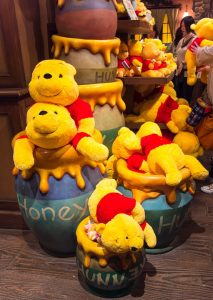Literature
57 Elements of Fiction: Character
We can use several ways to think of character:
| Importance | Roles | Characteristics | Development |
|---|---|---|---|
| Who are the main/important characters? | What is their purpose in the story? | What are the characters like? How are they acting? | How do the characters change and grow throughout the story? How does what they go through affect them? |
A story can have many characters, but you may not find all of these character types in a story.
Characters by Importance
Protagonist (aka Main Character)
- The protagonist is the character who is most written about in the story.
- A story will always have at least one main character, but it can have several. (In movies or television, this is called an ensemble cast—when each character is as important as another.) They are the most important in the action in the story.
Secondary Characters
- These characters may be written about often in the story and are important but not as much as the main character.
Minor Characters
- These characters fill in the story but are not as important as the protagonist or secondary characters.
- They may have small roles and stories of their own, but don’t drive the action of the protagonist/s main story.
- They might act as what we’d call “extras” in a movie. They can be as little important as background.
Characters by Role
Antagonist
- This character is generally in opposition to the main character. This is someone with whom the protagonist has a conflict.
- An antagonist can be any character who acts against any other.
- This does not necessarily make them “bad” characters. They are simply opposed to another.
Villain
- This is a character who is negative, bad, or evil.
- It might be the antagonist, but it might just be another bad character.
Sidekick
- This character goes along with another character in the story—usually the protagonist but can be with any character.
- This character’s purpose is to support another character.
Five Methods of Characterization (how we know what the characters are like)
- Describing the character’s physical appearance
- Showing the character’s actions
- Revealing the character’s thoughts and words
- Showing what other characters think and say about the character
- Telling the reader directly what the writer thinks of the character
Exercise
Choose your own short story, or use a story your instructor has assigned. Use examples from the story where applicable.
- Who is the protagonist in the story?
- Describe the character. What he or she looks like, acts like, talks like, thinks like, etc.
- Are there any secondary characters? Yes / No
- Who are they?
- Are there any minor characters? Yes / No
- Who are they?
- Is there an antagonist? Yes / No
- Who is it?
- Is there a villain? Yes / No
- Who is it?
- Is there a sidekick? Yes / No
- Who is it?
Answer the following questions to review character:

Media Attributions
- “Honey Pooh Tokyo Gift Shop Disney Japan” by Sony Nex-3 is licensed under a CC-0 Public Domain Licence.
pro = move forward (propel)
proto = first
ag = act
agonist = actor
protagonist = first to move action forward/first actor
anti = against
agonist = actor
one who acts against another

